Deep Sea Surveys of Three Iconic Shipwrecks from Battle of Midway Provide Never-Before-Seen Details
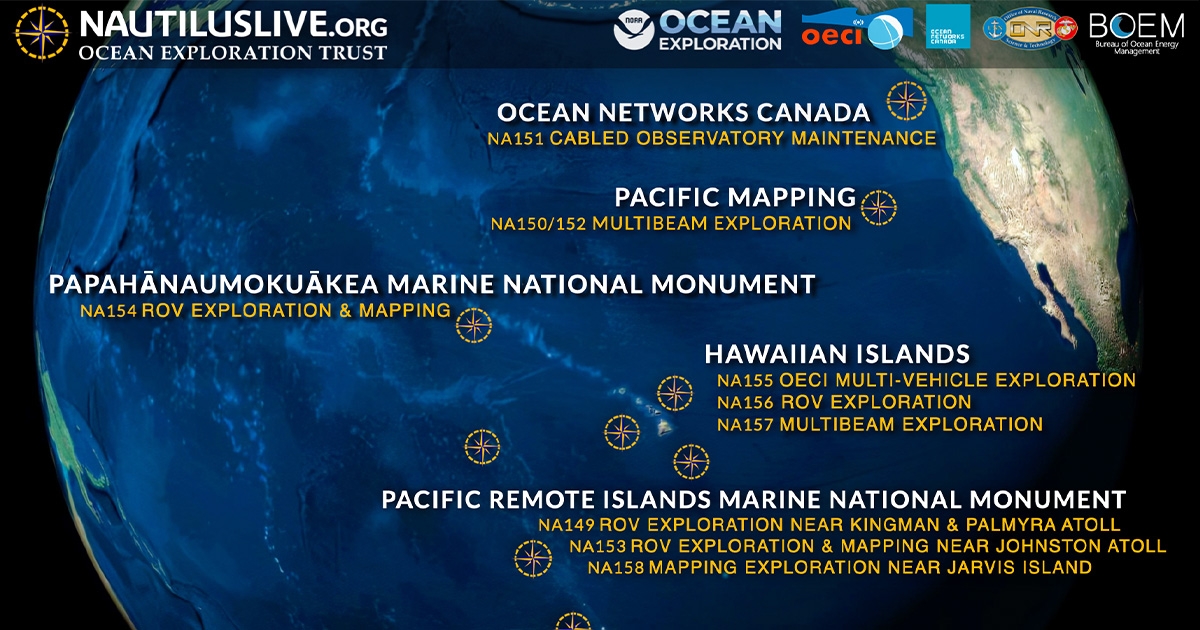
From September 8 to 12, 2023, a team led by Ocean Exploration Trust aboard Exploration Vessel (E/V) Nautilus conducted in-depth archaeological assessments of three World War II aircraft carriers lost during the Battle of Midway.
The assessments include the first visual survey of Imperial Japanese Navy (IJN) Akagi, the first detailed views of United States Ship (USS) Yorktown since it was first located 25 years ago, and a comprehensive survey of IJN Kaga. These historically significant wrecks were explored in their final resting places within Papahānaumokuākea Marine National Monument (PMNM), the largest protected area in the US and one of the largest in the world.
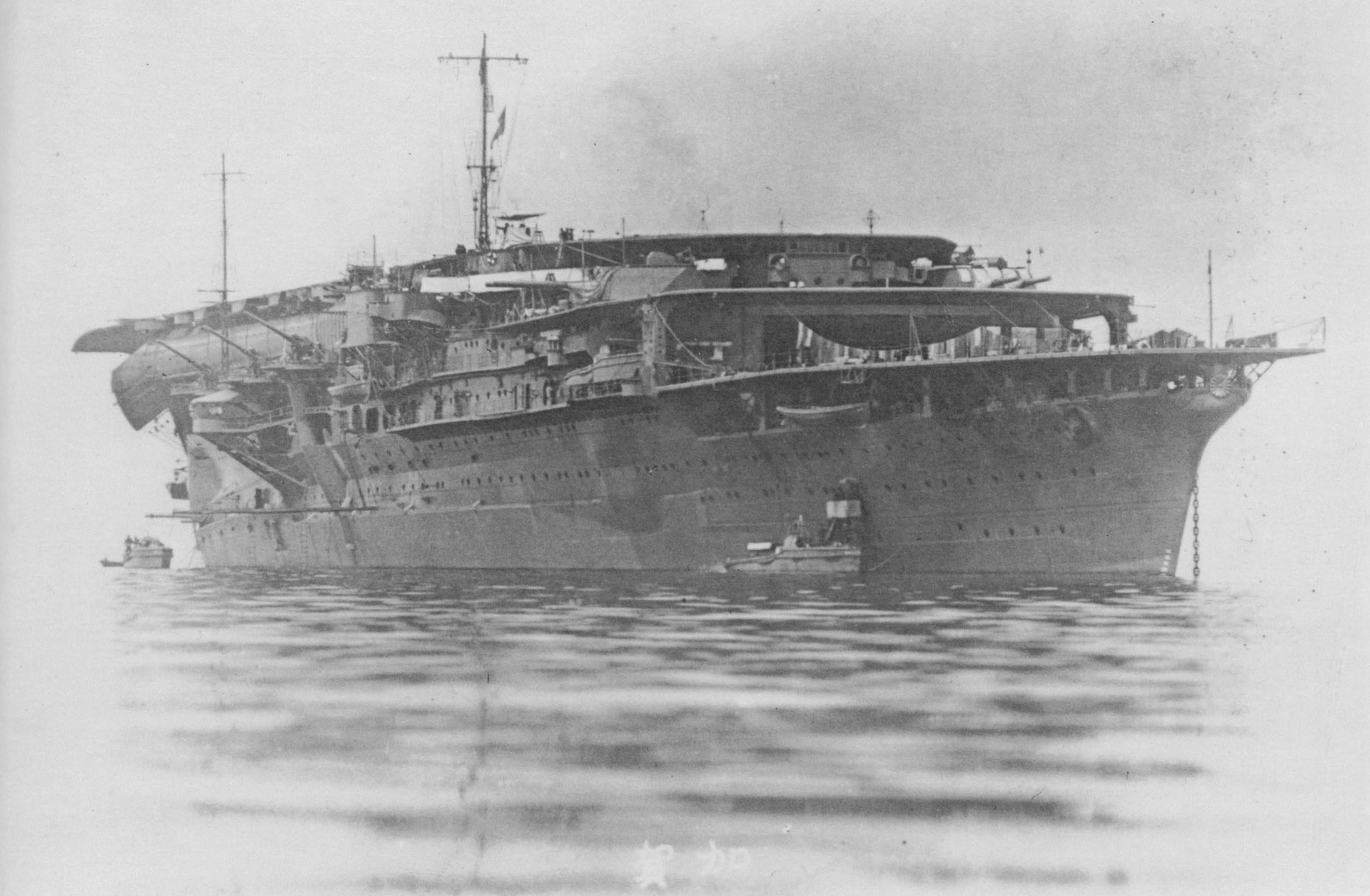 IJN Kaga, 1930. (Photo credit: Kure Maritime Museum)
IJN Kaga, 1930. (Photo credit: Kure Maritime Museum)
“This expedition is not only rewriting history and our understanding of these special places, but also pushing the limits of what we thought was possible in terms of interdisciplinary collaboration,” says Daniel Wagner, Ph.D., Chief Scientist for Ocean Exploration Trust. “During over 43 hours at depth, we methodically circumnavigated these historic wrecks, bringing to light many features in great detail, including their armament, battle, and sinking-related damage. Many anti-aircraft guns were still pointing up, providing clues about the final moments on these iconic ships.”
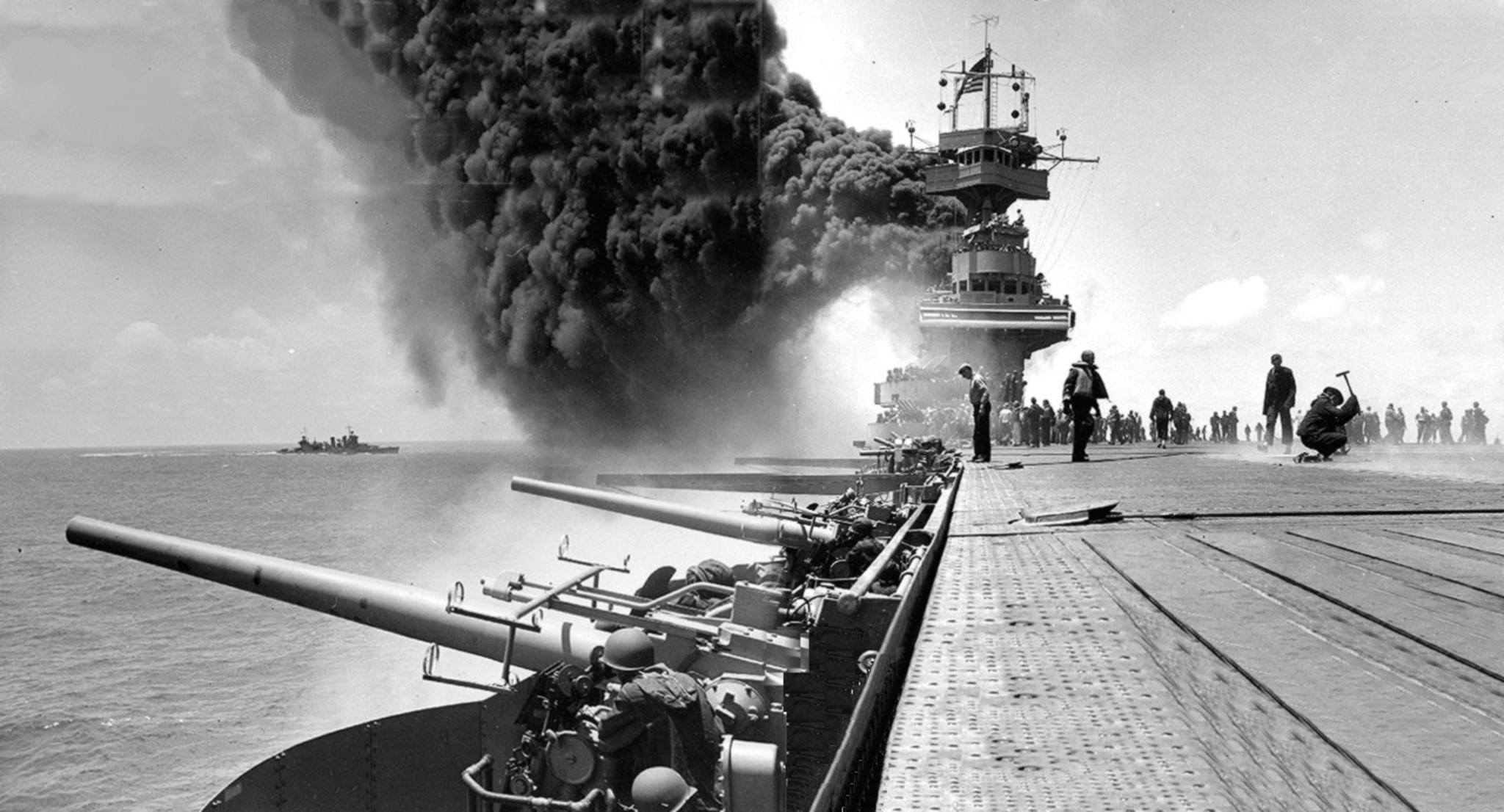 USS Yorktown burning in Battle of Midway. (Photo credit: National Archives)
USS Yorktown burning in Battle of Midway. (Photo credit: National Archives)
The surveys were aimed at documenting these historically significant wrecks, examining their condition, and honoring all those who lost their lives on both sides of the battle. The expedition team completed non-invasive visual surveys of the wrecks during three deployments below 5,100 meters (>16,600 feet, 2,770 fathoms), which represent the deepest of the more than 1,000 remotely operated vehicle dives conducted off E/V Nautilus to date.
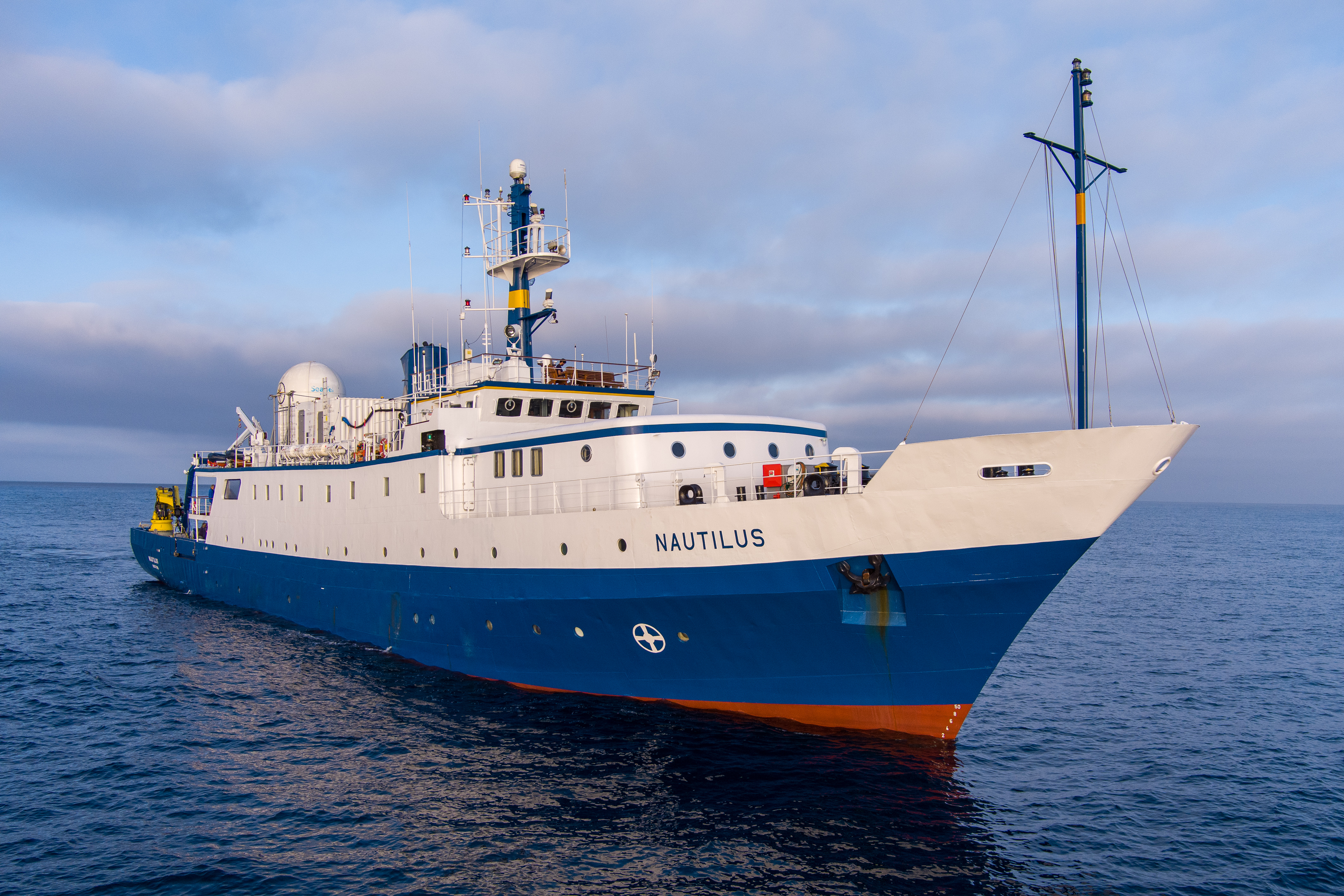 Exploration Vessel Nautilus. (Photo credit: Ocean Exploration Trust)
Exploration Vessel Nautilus. (Photo credit: Ocean Exploration Trust)
“To explore Papahānaumokuākea Marine National Monument and these iconic naval ships is a solemn privilege on many levels,” says Rick Spinrad, Ph.D., NOAA Administrator. “NOAA is grateful to the Monument Trustees, our partners, and the Nautilus expedition team who have made it possible to venture to these extreme depths and share these discoveries with the world.”
Throughout the mission, the video surveys were streamed live via NautilusLive.org, allowing the public and those with personal connections to the Battle of Midway an opportunity to explore and honor this history and engage with the onboard expedition team. Archaeologists from Japan, the US, and over 100 experts around the world were able to connect to ship operations via telepresence technology, helping guide the mission and providing valuable real-time interpretations throughout the surveys. Each dive was launched and closed with protocol ceremonies to honor this place and all who lost their lives in ways that reflected their significance to Kānaka ʻOiwi (Native Hawaiian), Japanese, and US military families and communities.
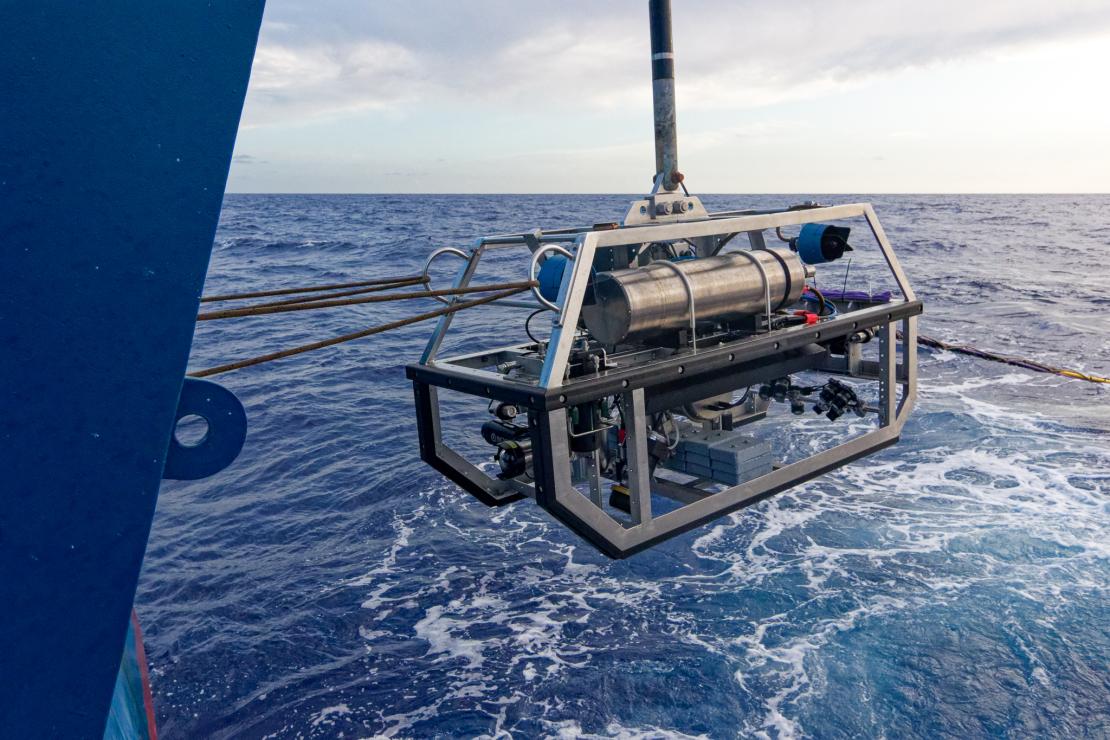 ROV Atlanta. (Photo credit: Ocean Exploration Trust, Ed McNichol)
ROV Atlanta. (Photo credit: Ocean Exploration Trust, Ed McNichol)
“On this occasion, we meet on those same Pacific waters in which Japan and the US. once met in battle, but this time as allies and fellow researchers,” says Kosei Nomura, Minister, Head of Economic Section, Embassy of Japan. “We are reminded that today’s peace and tomorrow’s discoveries are built on the sacrifices of war, and so in my view, it is meaningful that Japan and the US are now deepening their cooperation at Midway, utilizing such cutting-edge technology.”
This is the first time since the vessel went down in 1942 that anyone has seen the Japanese aircraft carrier IJN Akagi, which was initially located during a mapping survey conducted by Vulcan, Inc. in 2019 that involved US Navy participation. The E/V Nautilus team spent 14 hours surveying Akagi, examining battle and seafloor collision damage in the ship’s structure.
“An important part of our mission here at the Naval History and Heritage Command is to locate, interpret, and protect lost US Navy ships and aircraft, particularly those that represent the last resting place of American sailors,” says Samuel Cox, Director of the Naval History and Heritage Command. “We’re incredibly grateful for collaborative relationships – such as that with the Ocean Exploration Trust and NOAA’s Office of Ocean Exploration on this expedition – which enable us to document and assess the condition of these important war graves of both American and Japanese sailors.”
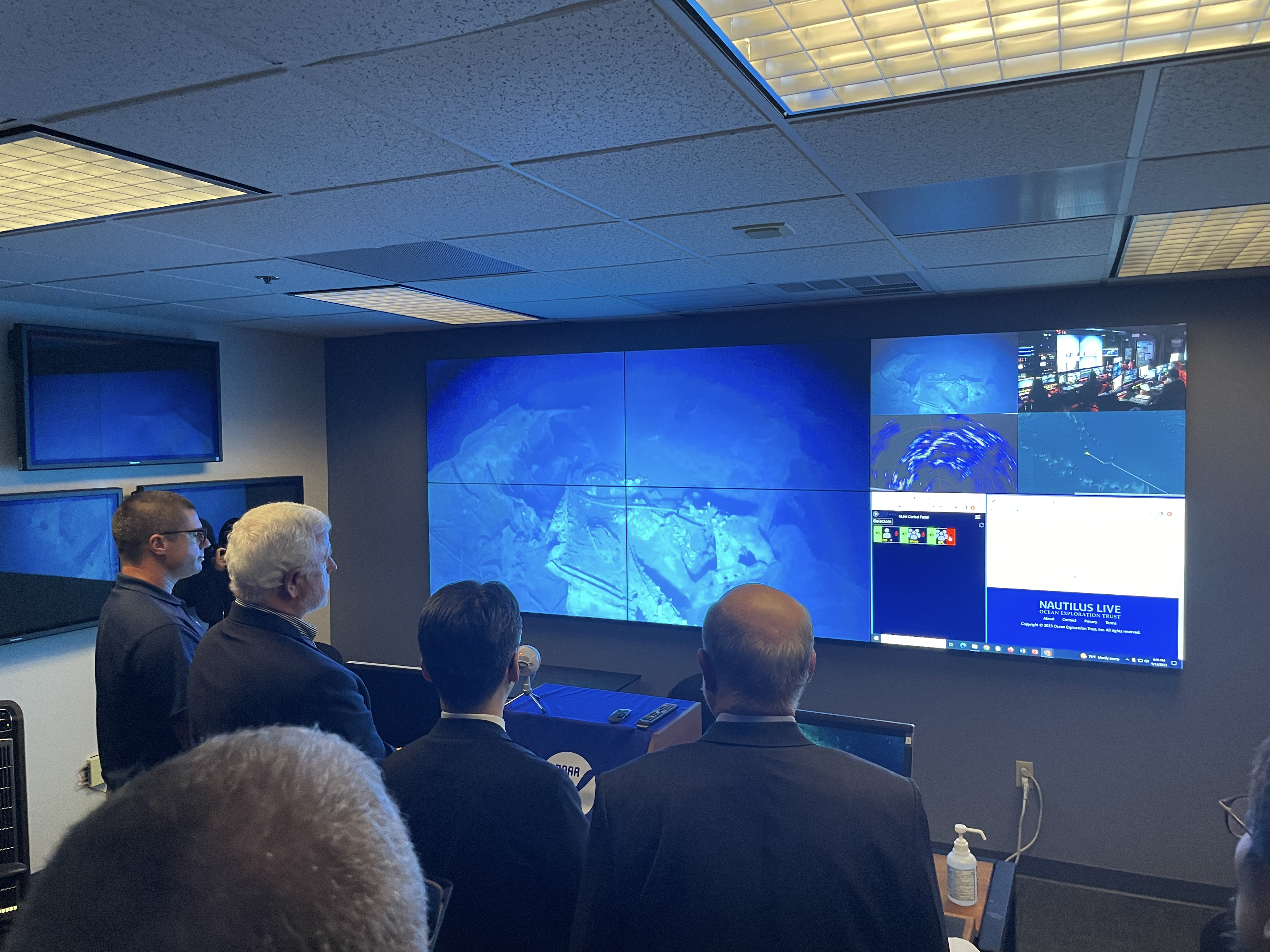 NOAA Exploration Command Center. (Photo credit: NOAA Ocean Exploration)
NOAA Exploration Command Center. (Photo credit: NOAA Ocean Exploration)
The expedition’s survey of USS Yorktown was the first time the world could witness this site in real-time, 25 years after it was initially located during a joint US Navy and National Geographic Society expedition led by Robert Ballard, PhD., president and founder of Ocean Exploration Trust. The team also conducted the first in-depth archaeological survey of Kaga that will yield data in the public domain.
PMNM is a UNESCO World Heritage site distinguished for both its cultural and natural significance, the only site with this special distinction in the US It is currently being considered for national marine sanctuary designation to further safeguard its diverse natural, cultural, and maritime heritage resources for generations to come.
These historic dives were conducted during the E/V Nautilus Ala ʻAumoana Kai Uli expedition, a 27-day NOAA-funded mission to explore never-before-seen deep-water habitats to collect baseline data needed to support management in the most remote northwestern section of PMNM. The Battle of Midway surveys were made possible by the expertise, support, and collaboration of many partners including Ocean Exploration Trust, NOAA Ocean Exploration, NOAA Ocean Exploration Cooperative Institute, NOAA Office of National Marine Sanctuaries, SEARCH, Inc., US Naval History and Heritage Command, International Midway Memorial Foundation, Papahānaumokuākea Marine National Monument, Office of Hawaiian Affairs, the State of Hawaiʻi, US Fish & Wildlife Service, University of Maryland, University of Rhode Island, University of Hawaiʻi, Bureau of Ocean Energy Management, Defense POW/MIA Accounting Agency, Air/Sea Heritage Foundation, and Japanese archaeological colleagues from Teikyo University, Tokai University, and Tokyo University of Marine Science and Technology. “The vast majority of our ocean lies in very deep waters that we know virtually nothing about,” says Wagner. “These deep-sea explorations highlight how many extraordinary things are still hidden and waiting to be found in the great depths of our ocean.”

